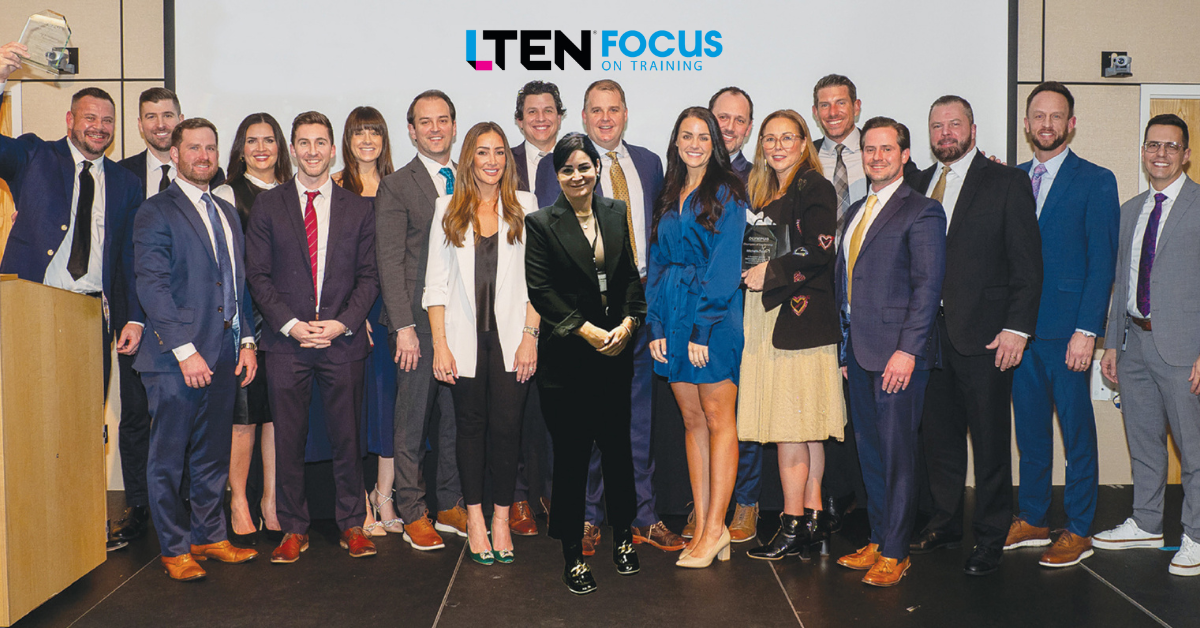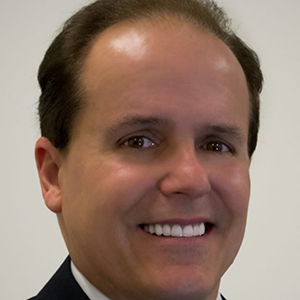
Cover Story – By Kevin Kruse
Rethinking your approach may make pipeline training stick
A great emerging leader program is the lever for leadership development. Pull this lever, and you will engage and retain your high performers, establish a diverse pipeline of future leaders and seamlessly fill manager turnover.
That said, too many emerging leader programs suffer from a common malady: They lack a method to make learning stick. These programs rely too heavily on expensive one-and-done workshops or Ivy League boot camps. The result is a workshop as intense and inspiring as it is short-lived. Three months later, these events have done very little to prepare talent to take the helm.
 “If you make leadership competency-based, it will always be your North Star so that you don’t get lost on your journey.”
“If you make leadership competency-based, it will always be your North Star so that you don’t get lost on your journey.”
Greg Adamson
Executive Director, Medical Sales Training
Olympus
 “It was really important to form teams very early on so that they could start to get through the forming, storming, norming, performing stages.”
“It was really important to form teams very early on so that they could start to get through the forming, storming, norming, performing stages.”
Michelle Taylor
Senior Sales Training Manager, Selling Skills & Leadership
Olympus
The antidote to this malady is to rethink your approach. Instead of thinking of your emerging leader program as an “event,” think of it as a “process.”
The medical technology company Olympus Corporation of the Americas serves as a prime example. To learn more, I spoke with Greg Adamson, executive director,
medical sales training, and Michelle Taylor, senior sales training manager, selling skills & leadership.
The new Olympus Emerging Leaders Program (ELP) was developed to identify future leaders and provide them with a structured developmental path.
As Adamson explained, “The company recognized that the first-line sales manager, who we call the regional vice president, is the single most important job in the company.”
Traditionally, Olympus, like most companies, followed the “buddy-to-boss” model, promoting successful sales reps directly to managerial positions. However, this
approach often overlooked the vital developmental phase of equipping these talented sales reps to lead people. Adamson and Taylor knew this was a critical opportunity to increase leadership effectiveness.
Selecting Aspiring Leaders With High Potential
Recognizing this gap, Adamson’s team focused on the creation of a new 18-month-long program targeting high-potential aspiring leaders. A selection committee ultimately chose 20 participants from 40 applicants. The thorough application process included a variety of data, such as modeling of Olympus values, sales results, achievements (e.g., field trainer responsibilities, national impact and elite/quota performance) and an essay assignment based on leadership competencies.
The 20 participants were then organized into smaller sub-teams to continue the journey together in cohorts.
“I thought it was really important to form teams very early on so that they could start to get through the forming, storming, norming, performing stages,” said Taylor. “The first thing we did was I divided them into five teams of four, and they did group activities like PowerPoint nights and pitching ideas to get to know each other.”
These cohorts enabled effective peer coaching while strengthening relationships among the highpotential future leaders.
One common mistake with emerging leader programs is to select a cohort that is too small to fill in for promotions and turnover. With 100 total first-line sales leaders, a 20-person cohort enabled Olympus to fill in for first-line leaders over the course of two years. It even left space for emerging leaders who promoted diagonally to lead in other functions (like finance or marketing).
Pre-Assessments Establish Baseline
The program kicked off with two days of activities at a third-party assessment center.
“Some people place the assessment center at the end of their program. We do it upfront as a sentinel event for everybody to rally around,” Adamson said.
Activities included in-box exercises, team dynamics evaluations and interactions with professional actors. These activities evaluated various leadership qualities.
Each participant received individual debriefs.
One month prior to the assessment center, participants completed a Hogan personality assessment. Hogan assessments are based on the gold-standard fivefactor
model of personality and provide a snapshot of leadership foundations, leadership emergence and leadership effectiveness.
In addition to a detailed written report, each participant received one-on-one debriefs on their strengths and developmental areas. First, they debriefed with an executive coach and then separately with their manager.
Competencies and Real-World Shadowing
The core of the program consisted of monthly “classroom clinics” organized around the Olympus Global Leadership competency model. The clinics were typically three hours in duration and scheduled on Friday afternoons. Taylor designed the program’s curriculum based on 10 core leadership competencies, including strategic mindset, innovation, results, decision quality, balancing stakeholders, engagement, collaboration, developing talent, instilling trust and situational adaptability.
“We then built our curriculum around each of those competencies,” Adamson said. “Instead of employing random courses where you’re throwing darts at a dartboard,
we wanted to make sure we were doing activities, guest speakers and experiences that would help build and fortify those leadership competencies.”
A key benefit of these Friday afternoon lectures, in addition to skill development, was that the emerging leaders had a chance to interact with senior executives who were invited in as guest speakers. The executives bring each competency to life for the emerging leaders. At the same time, the executives get exposure to the emerging leader cohort and then share about their positive experience with others. “Executive speakers help build momentum,” Taylor explained. “This acts as a kind of marketing tool to market our program and win stakeholder buy-in.”
Another feature of the ELP was job shadowing. Participants shadowed experienced managers in various roles within the organization. This includes marketing leaders, finance leaders and other functions.
“They listen in during staff calls, they get to participate in the 360-degree rating, and even listen in on mid-year reviews,” explained Adamson. “They get to have a day in their life, but in this case, a trimester in their life.”
This provided practical, real-world insights into leadership roles and responsibilities.
“We get them comfortable being uncomfortable,” Adamson said.
Capstone Projects
The program culminated with a capstone project that cleverly tied into an earlier Olympus innovation program. In the original program, employees were invited to propose new solutions that could generate at least $3 million in new revenue.
Ultimately, the best idea was selected and chosen for implementation.
However, Taylor recognized the potential in the numerous ideas that didn’t make it to the final round. As she explained, “We wanted to find a way to expose the cohort to the internal workings of the organization while also stretching them to grow strategy and innovation competency muscles.”
Seizing this opportunity, Taylor had the ELP cohorts choose from some of the additional ideas and asked them to develop business plans. Teams presented their business plans to more than 30 executives. The plans included go-to-market strategies, how to commercialize, profit and loss and risk analysis, among other things. The judges invested a full day to evaluate and choose four business plan proposals.
Final 360 Survey Evaluation
All participants did a final 360-degree survey to compare their baseline assessments. Preliminary results show a marked growth in their leadership development, especially around strategic mindset, cultivating innovation and balancing stakeholders. These are vital competencies that these leaders don’t usually get to develop while focused on driving results as territory managers.
The Takeaway
The ELP program’s blend of virtual and in-person learning, along with its emphasis on real-world application through business plan competitions and job shadowing, exemplifies the innovative approach to leadership training. The survey results and feedback from participants highlight the program’s effectiveness in preparing them for advanced leadership positions. Not to mention, more than half have already been promoted.
While the program has many different components and complexities, the success, according to Adamson, comes down to this: “Leadership and leadership development is not an event; it’s a process. If you make leadership competency-based, it will always be your North Star so that you don’t get lost on your journey.” The Olympus emerging leader program represents a significant leap forward in corporate leadership development. By prioritizing competency-based training, continuous assessment and practical experience, Olympus is not only shaping the future of its leaders but also setting a benchmark for others in life sciences.
 Kevin Kruse is founder & CEO of LEADx. Email Kevin at kevin@leadx.org or connect through www.linkedin.com/in/kevinkruse67/.
Kevin Kruse is founder & CEO of LEADx. Email Kevin at kevin@leadx.org or connect through www.linkedin.com/in/kevinkruse67/.









